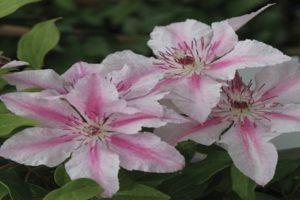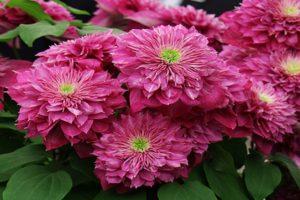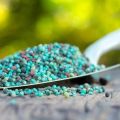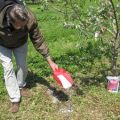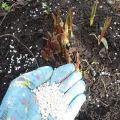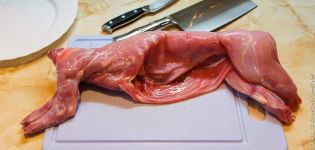How can you feed clematis in the fall, the best fertilizers for flowers
The question of how to feed clematis in the fall is quite complicated. There are many factors to consider when choosing a feeding scheme. The structure and acidity of the soil, the age of the plant, and its variety play a role. For abundant and long-term flowering, top dressing is necessary. The best effect is achieved with the complex use of mineral and organic fertilizers.
How to determine if clematis lacks fertilizer?
The appearance of an ornamental plant indicates the quality of care and soil fertility. For the rapid growth of green mass, the formation of buds, flowering, he needs micro and macro elements. You can understand which nutrient is missing by external signs.
Potassium deficiency symptoms:
- the edges of old leaves turn brown;
- pedicels, peduncles become black-brown;
- buds first droop, later - die off;
- the color of the flowers fades.
Most often, abundantly flowering varieties of clematis (Ville le Lyon) suffer from potassium deficiency.
Its deficiency impairs the synthesis of organic substances at the cellular level, leads to an insufficient supply of moisture to tissues.
The plant uses calcium to neutralize acids and build cells. Deformed shoots with softened ends are a sign of calcium deficiency. The signs are clearly manifested during the period of intensive growth of the vegetative mass.
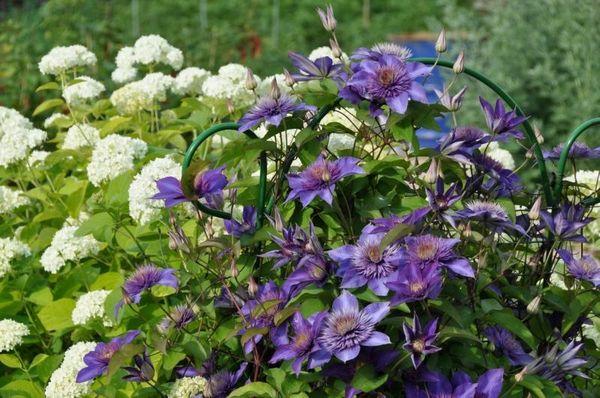
Chlorosis - yellow leaves, mosaic pattern, necrotic spots on the leaf plates indicate a magnesium deficiency. Its deficiency affects flowering. The color of the flowers fades, they become smaller. Magnesium deficiency is encountered in gardens with sandy and sandy loam soil. Signs usually appear towards or after the end of flowering.
If young leaves turn yellow, it means that the plant lacks sulfur. Chlorosis is also observed with a lack of iron. In the spring, the plant suffers from temporary chlorosis. The reason is the cold soil and, therefore, the weak work of the roots. Chronic chlorosis is observed in perennials growing on soils with an alkaline reaction.
After liming the soil, zinc deficiency can be observed. In clematis, it is manifested by a contraction of internodes (length), cessation of growth. After the introduction of organic matter (humus, fresh manure), signs of copper deficiency may appear. In a plant, the course of redox processes deteriorates.
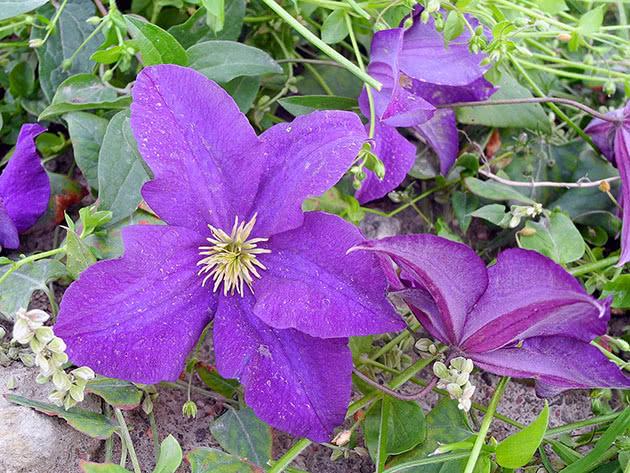
When to start feeding clematis
Scheduled feeding of clematis is carried out in spring, summer and autumn, unscheduled - when symptoms of nutritional deficiency appear.Thanks to regular fertilization, abundant and long-term flowering of varietal clematis is achieved. Systemic use of fertilizers increases the immunity of perennials.
Spring feeding
In the spring, 1-2 dressings are enough, carried out with an interval of 2 weeks. At the beginning of the growing season, when the soil warms up, feed the root with infusion of mullein or bird droppings. You can add urea to it no more than 1 tbsp. l. in a 10 liter bucket.
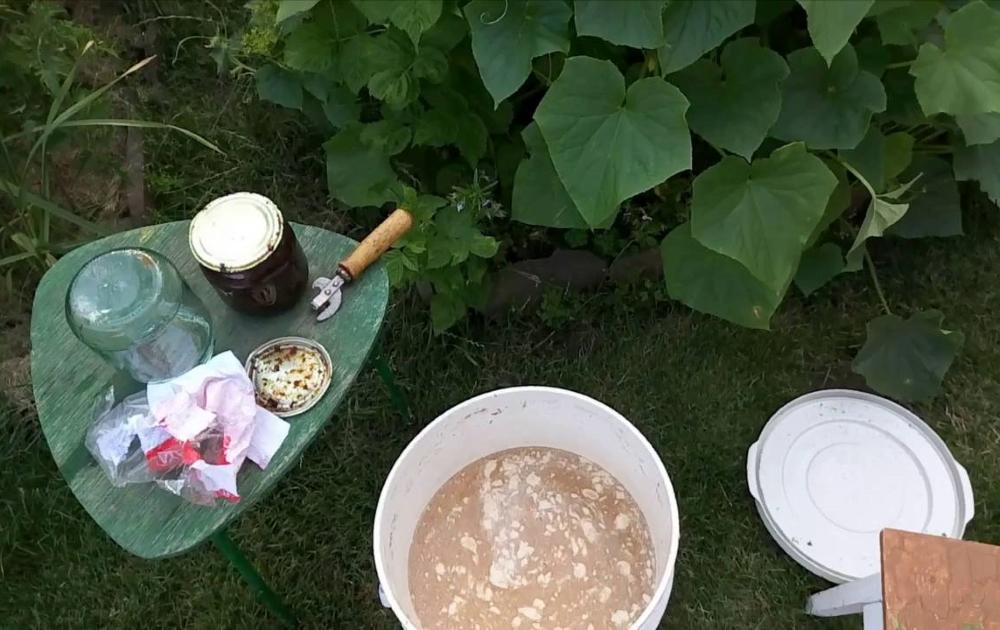
The second top dressing should be carried out on the sheet, after the shoots have grown. Solution for spring foliar feeding of clematis:
- water 1 l;
- urea 3 g
Summer feeding
In June, the flowers are fed with fertilizers containing phosphorus and potassium. For signs of potassium deficiency, potassium sulfate is used. During or after flowering, the bushes are sprayed with magnesium sulfate. Such a top dressing is needed for clematis growing on sandy and sandy loam soil. In August it is better to use the Fertika Autumn complex fertilizer.
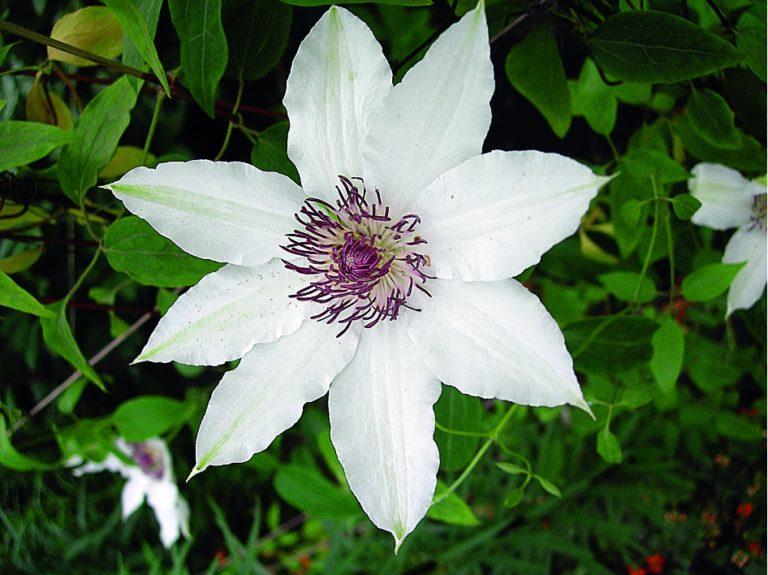
Fertilization in autumn
In September, all fertilizers are applied dry. During the winter, soil microorganisms will process them into a form more accessible to plants. Fall dressing should not stimulate shoot growth. The following is introduced into the soil:
- bone meal, it serves as a supplier of phosphorus, calcium;
- ash, it contains potassium and phosphorus, clematis will spend them on the formation of roots and budding.
Fertilizers for clematis
Florists in their practice use organic and mineral fertilizers. Alternating feeding, this improves the absorption of nutrients by clematis.
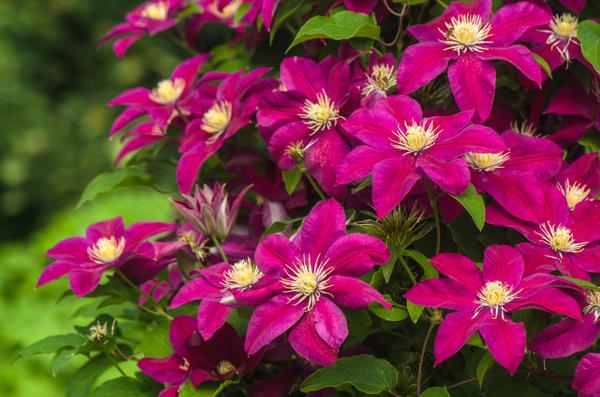
Mineral
It is easier to use complex mineral fertilizers containing nitrogen, phosphorus and potassium. Many growers use Fertika. Suitable for flower crops:
- Fertika Universal 2 Spring-Summer;
- "Fertika Autumn".
The content of N (nitrogen), P (phosphorus), K (potassium) is presented in optimal proportions. They meet the needs of the ornamental plant at different stages of the growing season.
Nitrogen
In floriculture, nitrogen in the soil is replenished with nitrogen-containing fertilizers. They are introduced into the soil in 2 ways:
- dry (granules);
- liquid (fertilizer solution).

The solution is prepared exactly according to the instructions. The granules are scattered over the soil surface and watered abundantly. To feed clematis with nitrogen, you can use:
- urea;
- ammonium nitrate;
- ammophos.
Phosphoric
Most often, gardeners use superphosphate. It contains about 20% phosphoric acids. The fertilizer is produced in the form of water-soluble granules. They can be used dry or prepared with an aqueous solution. Into acidified soils, add:
- phosphate rock (P = 25%);
- bone meal (P = 35%).

Potash
Chlorine (potassium chloride) may be a part of potash fertilizers. Clematis do not react well to chloride compounds. In spring, it is recommended to feed the flowers with potassium nitrate, and after flowering, add potassium sulfate.
Organic
The use of organic fertilizers does not harm the soil microflora. Almost all gardeners use them due to their availability and low cost.
Manure
Manure (mullein) contains all the essential nutrients of plants. A large proportion is made up of phosphorus and nitrogen, there is also potassium, which clematis needs for abundant flowering. Manure as an organic fertilizer is needed in the spring.
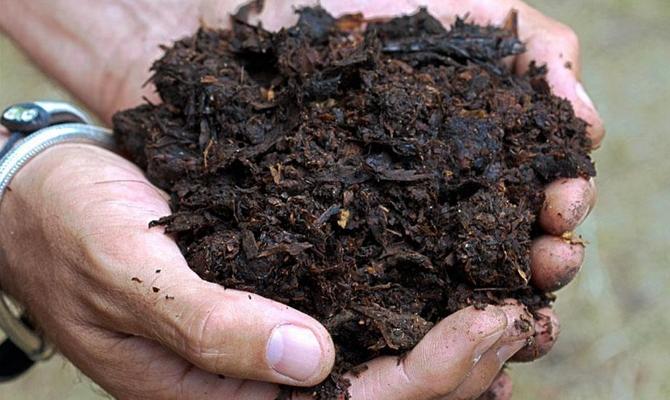
An infusion is prepared from it:
- take a bucket with a capacity of 10 liters;
- fill it with 5 parts of water, 1 part of fresh mullein;
- cover with a tire, leave for 7 days, stir every day.
After a week, filter the liquid, add water to the bucket. You should get 10 liters. This is a concentrate. To feed clematis, the mullein infusion is diluted with water 1 to 10. 8-10 liters are poured under 1 bush.
Bird droppings
Dry chicken manure is usually used. The percentage of minerals in it is higher than in mullein. The use of chicken infusion significantly increases soil fertility.For 1 part of the litter, add 15 parts of water, insist for at least a week. The fertilizer contains a lot of nitrogen, so it is used only in spring and early summer.
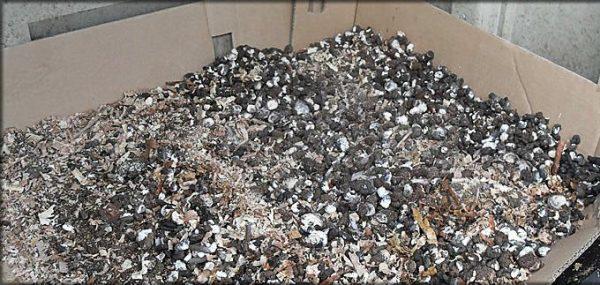
Folk remedies
Folk recipes do not lose their relevance among gardeners. Despite their simplicity and low cost, they bring real benefits to ornamental plants.
Yeast
Yeast contains proteins, minerals, amino acids. Yeast root feeding stimulates the growth of beneficial soil bacteria. In clematis, it stimulates root growth, strengthens the immune system.
Clematis are fed with yeast in spring, but only after the soil warms up to 12-15 ° C. Fertilizer recipe for a 70 L barrel:
- 1 bucket of chopped herbs
- 0.5 kg of dry bread;
- 500 g fresh yeast;
- water.
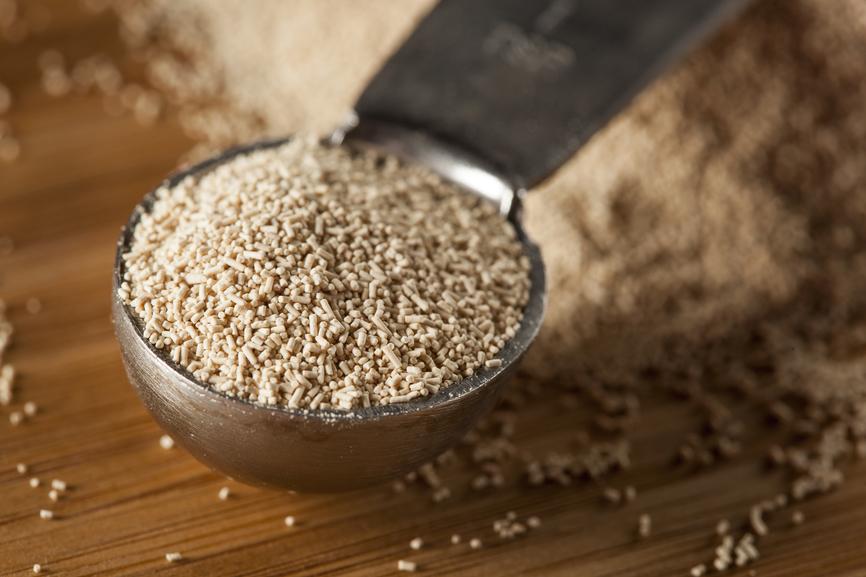
Insist 2 days. To feed clematis, the infusion is diluted with water 1: 5.
Ammonia
In ammonia, nitrogen is in the form accessible to the flower. It is added to water and root feeding is carried out. For 10 liters of water, 1 tbsp is enough. l. ammonia. Do not exceed the dosage. With an overdose of nitrogen in clematis, the green mass grows to the detriment of flowering. Overfed plants are more likely to suffer from fungal diseases.
Lime milk
This type of fertilizer is used by all growers. It deacidifies the soil. Prepare lime milk from 10 liters of warm water, 150 g of chalk, 100 g of ash... All ingredients are thoroughly mixed until a homogeneous consistency is obtained. Apply the remedy during May or June.

Fertilization rules
During planting, fertilizers are applied to the soil, which the plant spends in the first year of life. Root dressing is included in the scheme of plant care at the age of 2 or more years. They need to be fed at least 5 times per season. Only in this case will there be abundant flowering.
Top dressing scheme
In the spring, at the beginning of the growing season, clematis need nitrogen. In May, they are fed with mullein infusion, adding 1 tbsp. l. urea. Plants need potassium before and during flowering. In June, before the formation of buds, they are fed 2 times:
- under the root of liquid fertilizer from 10 liters of water, 1 tbsp. l. potassium sulfate, 10 g "Agricola";
- on the sheet by means of "Bud".

When the mass flowering is over, clematis is fertilized with complex mineral fertilizers:
- Agricola;
- "Kemira";
- "Fertika Summer".
Top dressing is carried out every 2 weeks. In August, they begin to prepare the plants for winter. They are fed with phosphorus-potassium fertilizers. Nitrogen is not needed at this time.
Foliar fertilizers
Spraying clematis with liquid fertilizers is carried out when symptoms of nutrient deficiency appear. Foliar dressing is absorbed by flowers faster than root dressing. The effect of the use of liquid fertilizers comes in 5 hours.
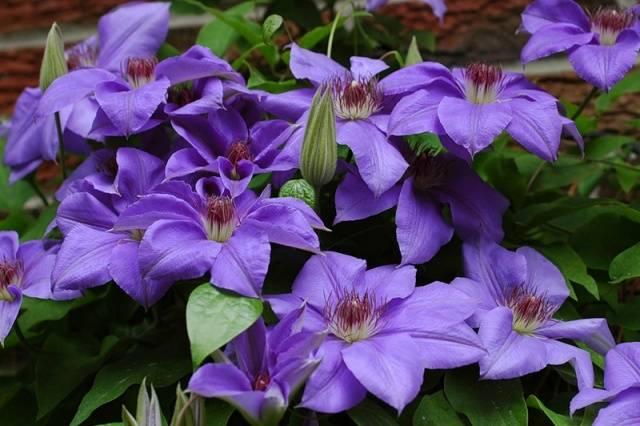
Clematis respond well to feeding with drugs:
- "Aquarin";
- "Solution" (for flowering plants);
- "Master".
Signs of excess fertilizer
In the absence of an exact fertilizing plan, the chaotic use of all types of fertilizers, clematis exhibit symptoms of an excess of one or another nutrient. With an overdose of potassium, old leaves turn yellow, internodes are shortened, fewer buds are formed, the color of flowers changes for the worse. Clematis slows growth.
Excess calcium causes early aging of clematis. Leaves fall off, flowering is poor. With an excess of calcium, iron, potassium, magnesium, boron, and manganese are less assimilated. The plant shows signs of their deficiency.

Damaged roots, their slow growth, the formation of a root lobe are symptoms of excess magnesium. Due to problems with the roots, clematis receives less nutrients, this slows down the growth of shoots. Excess magnesium impairs the absorption of iron, potassium, calcium.
Symptoms of excess iron appear in clematis growing on acidic soil:
- the leaves become dark blue or blue-green;
- growth of shoots slows down;
- some of the leaves die off.
Common mistakes gardeners make
When growing large-flowered clematis, flower growers often make the mistake of alkalizing the soil. Mulch it with ash or sand. Lime milk is used as fertilizer.

Hybrid forms of viticella, integrifolia, large-flowered varieties like acidic soil, alkaline ones prefer varieties:
- orientale;
- tanguica;
- alpina;
- Montana.
Planting seedlings in cold soil in spring is bad for the development of the root system. The plant experiences less stress if the soil temperature is 18-20 ° C at a depth of 20 cm. A common problem for novice florists - clematis stops growing in June, its growth does not exceed 20-30 cm. The reason is poor care. The problem is solved with increased watering and 2-3 nitrogen fertilizing.
In hot summer, due to rare watering, the bushes lose their decorative effect, their tops dry out. It is necessary to provide the plant with regular watering. Rolled leaves can signal aphid infestation. Spraying with tobacco infusion helps from it. They are held every 3 days.
In caring for clematis, you need to remember simple rules. In spring they need nitrogen, and in summer they need potassium and phosphorus. Folk remedies, mineral and organic fertilizers will help to achieve long flowering.
